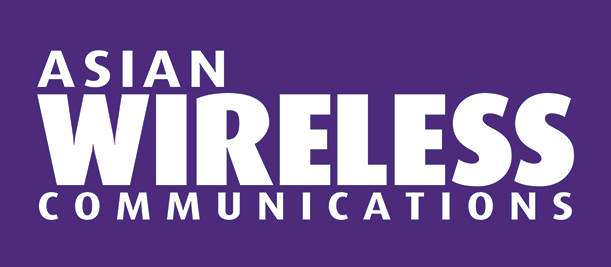05 December 2022

Digital transformation is soaring in southern Asia, with MNOs racing to keep up with the latest developments. Mark Brewer, VP of service industries, IFS, outlines how telcos can realise true network transformation in a time of immense change

South Asia’s telecommunications industry is a complex and diverse one. Singapore boasts one of the most mature and competitive telecommunications markets in the world. Yet the market is different in India where the long-awaited rollout of 5G in the coming months is expected to fuel huge growth in the number of mobile subscribers.
Despite the complex picture across the region, mobile and fixed line communications providers are looking confidently towards the future. The slowdown in mobile growth, largely caused by the pandemic, is now history and the race to establish 5G networks as well as faster and more efficient broadband systems is underway.
The pace of innovation is being driven by ever more savvy consumers demanding services such as video streaming and payment and banking apps that require reliable robust networks to function effectively. Add to this the growing availability of budget mobile devices and mobile penetration, as well as data usage, is expected to soar.
The rewards for the telecommunications companies and indeed consumers could be sizable too. The growing availability of 5G networks has meant that telcos have been able to expand their markets and offer ever more competitive packages. In Malaysia, for example, data prices have fallen by as much as half in the last five years.
Revitalising networks
Yet in order to satiate public demand, telecommunications operators have entered the heavy investments phase both in fixed and mobile segments. Capex spending across the region remains high and is likely to increase.
In addition to the rollout of private and public 5G, the region is expanding its IoT efforts to facilitate industry 4.0 as well as its edge computing initiatives.
Telcos are under ever more pressure to deliver fast, ubiquitous 5G wireless connectivity along with an endless list of services. For example, as we continue to transition towards emissions-free transport, automotive manufacturers now rely on 5G streaming telemetry to launch viable autonomous and electric cars and light commercial vehicles. Autonomous capabilities require exceptional bandwidth and resilience, enabling connected in-vehicle services. Commercial vehicles (especially last mile delivery and field service fleets) will need seamless 5G connectivity for smart routing and scheduling to dynamically optimize vehicle range and recharging breaks.
With so much opportunity on the table, there is sometimes a rush from telcos across the globe to deploy new technologies to create new customer experiences that meet market demand, facilitate revenue growth, and drive shareholder value.
The challenge of innovation
While success is often measured on the rate of 5G or edge computing deployment, resilient business growth and customer satisfaction ultimately depends on network digitalisation on both the outside and in. Ironically, the internal legacy systems (OSS/BSS/NSS) in place at many telcos makes it challenging to meet the outcome-based performance metrics they’ve established for themselves and their customers.
In addition, maintaining a high-quality customer experience that delivers new personalised services and applications in real-time is no easy goal with a backdrop of global challenges also in the mix.
Macro-economic issues such as rising costs, talent gaps and supply chain disruption, some of which can be attributed to the ongoing war between Russia and the Ukraine, make internal service management infrastructure even more vital for projects such as multi-year 5G rollouts to perform without any barriers or obstacles.
With real-time customer service being a key performance indicator for delivering the latest service improvements in 5G, IoT and edge computing, management of internal infrastructure becomes a key business differentiator.
Yet with legacy systems, telcos suffer from silos and the inability to bring it all together.
In South Asia some companies have bigger issues with legacy systems than others. In Malaysia, for example, mobile operators must contend with the current de-facto exclusivity arrangements for some state-backed companies controlling infrastructure rollout and permits at the state level.
Countries across the region are also contending with the mothballing of 2 and 3G systems, which can be a time-consuming and involved process.
Legacy tech hampers growth in many industries at present but is more pronounced among businesses that are intrinsically linked to digital progress, telecommunications being a prime example. Hindering improvements has a knock-on effect on the ability to leverage innovations, which will inevitably impact the end customer experience. It all begins within the confines of the company’s own space; among its own workforce; affecting change projects.
Digitalisation from the inside out
Smarter management of assets, parts, equipment, and field workers, combined with a customer-centric approach is the foundation of success, and that can only be achieved via a strategy based on breaking down the silos.

Among the biggest challenges that have faced telcos for years is planning, building, and maintaining their network infrastructure. Telcos often lack complete visibility and control over the type, quantity, and location of assets in their network and are not always sure if these assets are covered under a service contract. In the race to deploy new technologies, telcos often procure and deploy assets without commissioning or registering them or determining if they already own them. As a result, telcos may also suffer from under-stocking, creating inventory excess and obsolescence.
Another reason telcos lack visibility and control over assets is because their asset base has grown over time through mergers and acquisitions. This is a situation especially pertinent to the South Asian marketers which has seen a degree of rationalisation in recent years as well as the entrance of several new players. Thus, knowledge of these assets, and the associated documentation is not easily accessible and may be scattered throughout the organisation, contained in different databases, systems, spreadsheets and documents. In turn, the telco may be required to perform manual interventions to maintain legacy assets. Also, communication may suffer between operations, maintenance, and engineering teams when they are not using the same naming conventions or where they are leveraging multiple asset management systems.
Without access to a high-quality asset registry, telcos can’t evolve toward predictive maintenance or provide proactive or prescriptive service management. Unexpected failures can be costly to operations, damage customer satisfaction, and negatively impact future revenue streams. More importantly, telcos need this data to ensure they dispatch the optimum field technician to the asset’s site to drive a high first-time fix rate and reduce or avoid repeat failures.
Telcos must look across their planning horizons to ensure they have the skilled technicians available at the right time and place. They must do this efficiently to keep up with customer demand and prevent loss of market share. Possessing the flexibility to forecast, plan and optimise resources over a multi-year period is critical. Without proper planning tools, telcos cannot forecast workloads, staff work crews, or consider the impact that various factors like skill sets, employee levels, and seasonality have on rollout performance. This limitation makes it difficult for telcos to anticipate needs, meet customer demands, or drive improvements in productivity and efficiency. Field workforce resource planning tools help to provide a smoother, future-proofing environment.
Focusing on business outcomes
By breaking down the silos across asset, workforce and service management and adopting an integrated approach, internal operations can support the development of new business models. By doing so, they pave the way for new telco deployments and innovations to reach their full potential. As a result, digital transformation across the region will be able to truly take off and enable telcos to deliver the type of services that will prove transformative for consumers, businesses, and the region’s digital economy.
Delivering the wireless infrastructure and services needed for 5G and smart devices, and meeting ever-rising consumer expectations, will be challenging – but help is at hand.
In a sector constrained by legacy service management systems, modern enterprise software specifically designed for telco can rapidly provision industry-proven operational and service capability for 5G networks now – just when it matters most.







